Today’s blog introduces the role of the curator in organizing art exhibitions with an eye towards the creative involvement of the visitor.

Marcel Duchamp declared in his 1957 paper, “Creative Act,” that “all in all, the creative act is not performed by the artist alone; the spectator brings the work in contact with the external world by deciphering and interpreting its inner qualifications and thus adds [her or] his contribution to the creative act.” (My italics and pronoun edit to original).

The following excerpts from are Francesco Manacorda’s essay “For Whom Do We Write Exhibitions? Towards a Museum as Commons.” [See link below].
We might “consider exhibitions as communicative constructs; texts using a combination of iconic, textual, aural, and exhibition-specific conventions.”

“An exhibition’s textuality involves a variety of signs and other texts being woven together; this includes the works of art, but also other key textual components, such as their titles, interpretative panels, direct quotes from the artists, extended captions, the exhibition’s accompanying printed matter, and three-dimensional associative enunciations—display conventions such as the juxtaposition of works to generate meaning through similarity or contrast.”

“The art exhibition is essentially a lazy machine which counts on the plus-value of meaning that the viewer introduces as if to fill a series of blank interstitial spaces.”
Manacorda quoted my favorite art critic Peter Schjeldahl who had this to say about how viewers may interact with an art exhibition. Schjeldahl reviewed an exhibition that seemed to be “withholding the often intricate backstory that informs each of the works and this leaves a viewer with three choices that I can see.”
“One is to be maddened by the tease.”
“Another is to be stimulated to consult the catalogue, which is replete with brainy curatorial essays and with extended quotes from such cynosures of the art-school seminar as Jean-Luc Godard and Pier Paolo Pasolini, and from artist friends, including Barbara Kruger, Daniel Buren, and Lawrence Weiner.”
“Still a third is to relax and enjoy the mute and striking elegance of an installation that amounts to an exhibition about exhibiting. I have tested all three options. They all work.”
Manacorda: “I consider an ethical duty of the curator—especially the museum curator—to facilitate the various possible actualizations of exhibitions for audiences of different backgrounds.” I am in agreement with Manacorda’s declaration.
“The question of [curatorial] responsibility leads us to the focus on how to deliberately increase the cooperation with the public, finding ways of writing—or designing—exhibitions that allow, stimulate, and encourage their readers/viewers to contribute.”

“Would it be possible to contemplate that the reader/viewer cooperation might not just be circumscribed to the interpretation and actualization of a text, but more literally in the territory of co-authoring?”
What would co-authoring with the art museum curator look like?
“Rather than Umberto Eco’s ‘lazy machine,’ in this [collaborative] model the museum is like a learning machine. One that learns with the audience in a pedagogical relation that is bidirectional. If the traditional museum can be compared to a broadcasting television or radio station that distributes knowledge generated by experts to general learners who grow by acquiring information and new knowledge, the museum as a learning machine sees all involved actors in the learner position, although not everyone would occupy the expert position as well.” My italics.
Curators as knowledgable historians have to have the last word in exhibition design and interpretation.

Manacorda’s exhibition Art Turning Left, 2012, is cited as an example to “illustrate how we experimented with these ideas at Tate Liverpool. [The photos are from this exhibit.] The framework of the show in question was to investigate the way that political beliefs had changed how artists produced their work or their attitude towards the ownership, management, and re-design of the means of art production.”
According to the Tate Liverpool press release: Art Turning Left is a thematic exhibition, based on key concerns that span different historical periods and geographic locations. They range from equality in production and collective authorship to the question of how to merge art and life. The exhibition moves away from the political messages behind the works and claims about the ability of art to deliver political and social change, and instead focuses on the effect political values have had on the processes, aesthetics and display of artworks.
Manacorda’s curatorial experiment “symbolically highlight[-ed] how the exhibition was a text to be added to, enriched, and debated [and] not necessarily only in a positive way.”
At Cedarhurst, we offer visitors ways to read and unpack exhibitions for their potential meanings and encourage visitors to determine their own conclusions about an art work’s significance and place within the fabric of history.
See Stedelijk Studies: Francesco Manacorda, Artistic Director at Tate Liverpool.





